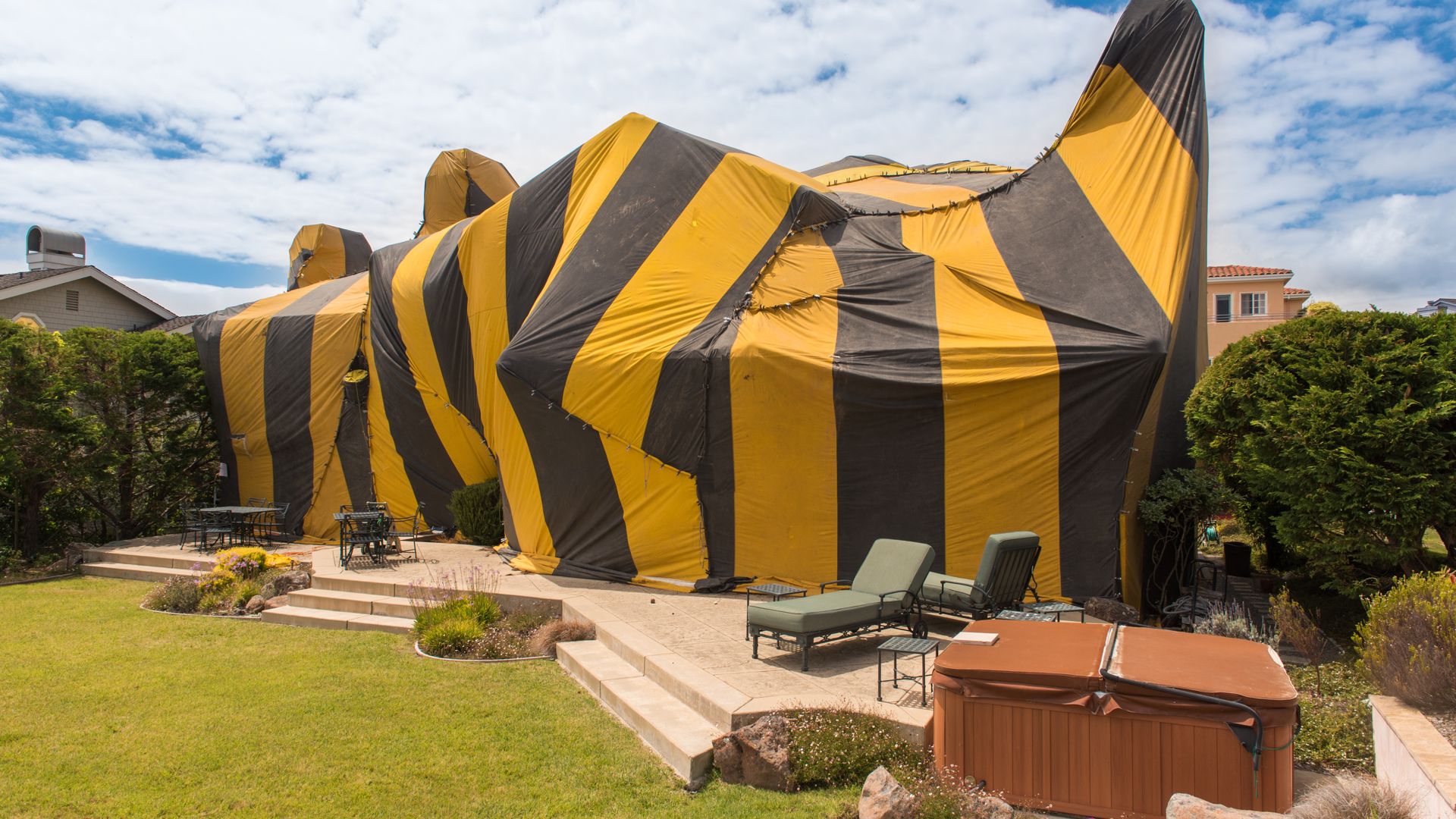Appearance
Small wasps with black and yellow stripes; 1/2- to 1 inch. Two sets of wings and a narrow waist.
Habitat
Yellow jackets live in trees, in houses or on the ground. This wasp also builds its nest inside the walls of buildings after entering through cracks in the outside walls. They live in colonies containing thousands of individuals. Yellowjackets are highly social and will sting if their colony is threatened, leaving symptoms ranging from painful swelling to life-threatening allergic shock. Unlike the honeybee which stings one time and then dies, a single yellow jacket can sting many times. As a pollinator of flowering plants they can be very beneficial, but colonies around your home or recreation area can pose a threat.
Diet
Nectar, fruits, juices and certain foods; insects and spiders in some cases.
Control
To prevent accidental stings, when working in a garden be aware of numerous wasps flying into and away from a single point or to a hole in the side of the house. This will usually indicate where a colony might be located. Be careful when using lawnmowers or other powered lawn equipment, as loud, vibrating noises disturb yellow jackets and may send them into an attacking frenzy. Stay away from nests once you know where they are. If yellow jackets are seen entering and exiting a wall, do not plug the hole. If a colony poses a threat, it should be eliminated. Because of the danger in treating these nests, only a professional should attempt to do so.

